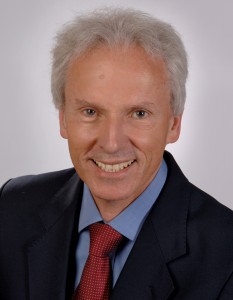 Josef Kittler is professor of Machine Intelligence at the Centre for Vision, Speech and Signal Processing, University of Surrey. He received his BA, PhD and DSc degrees from the University of Cambridge. He teaches and conducts research in the subject area of Signal Processing and Machine Intelligence, with a focus on Machine Learning, Biometrics, Video and Image Database retrieval, Automatic Inspection, Medical Data Analysis, and Cognitive Vision. He published a Prentice Hall textbook on Pattern Recognition: A Statistical Approach and several edited volumes, as well as more than 700 scientific papers, including in excess of 200 journal papers. He serves on the Editorial Board of several scientific journals in Pattern Recognition and Computer Vision. He became Series Editor of Springer Lecture Notes on Computer Science in 2004. He served as President of the International Association for Pattern Recognition 1994-1996. He was elected Fellow of the Royal Academy of Engineering in 2000. In 2006 he was awarded the KS Fu Prize from the International Association for Pattern Recognition, for outstanding contributions to pattern recognition. He received Honorary Doctorates from the University of Lappeenranta in 1999 and the Czech Technical University in Prague in 2007. In 2008 he was awarded the IET Faraday Medal and in 2009 he became EURASIP Fellow. His talk takes place on November 4, E104 at 2pm.
Josef Kittler is professor of Machine Intelligence at the Centre for Vision, Speech and Signal Processing, University of Surrey. He received his BA, PhD and DSc degrees from the University of Cambridge. He teaches and conducts research in the subject area of Signal Processing and Machine Intelligence, with a focus on Machine Learning, Biometrics, Video and Image Database retrieval, Automatic Inspection, Medical Data Analysis, and Cognitive Vision. He published a Prentice Hall textbook on Pattern Recognition: A Statistical Approach and several edited volumes, as well as more than 700 scientific papers, including in excess of 200 journal papers. He serves on the Editorial Board of several scientific journals in Pattern Recognition and Computer Vision. He became Series Editor of Springer Lecture Notes on Computer Science in 2004. He served as President of the International Association for Pattern Recognition 1994-1996. He was elected Fellow of the Royal Academy of Engineering in 2000. In 2006 he was awarded the KS Fu Prize from the International Association for Pattern Recognition, for outstanding contributions to pattern recognition. He received Honorary Doctorates from the University of Lappeenranta in 1999 and the Czech Technical University in Prague in 2007. In 2008 he was awarded the IET Faraday Medal and in 2009 he became EURASIP Fellow. His talk takes place on November 4, E104 at 2pm.
3D Assisted 2D Face Recognition
Abstract: 3D Morphable Face Models (3DMM) have been used in face recognition for some time now. They can be applied in their own right as a basis for 3D face recognition and analysis involving 3D face data. However their prevalent use over the last decade has been as a versatile tool designed to assist 2D face recognition in many different ways. For instance, 3DMM can be used for pose, illumination and expression normalisation of 2D face images. It has the generative capacity to augment the training and test databases for various 2D face processing related tasks. It can expand the gallery set for pose invariant face matching. For any 2D face image it can furnish complementary information, in terms of its 3D shape and texture. It can also aid multiple frame fusion by providing the means of registering a set of 2D images.
A key enabling technology for this versatility is 3D face model to 2D face image fitting. The recent developments in 3D model to 2D image fitting will be discussed. They include the use of symmetry to improve the accuracy of illumination estimation, multistage close form fitting to accelerate the fitting process, modifying the imaging model to cope with 2D images of low resolution, and building illumination free 3DMM. These various enhancements will be overviewed and their merit demonstrated on a number of face analysis related problems in the context of 2D face recognition.